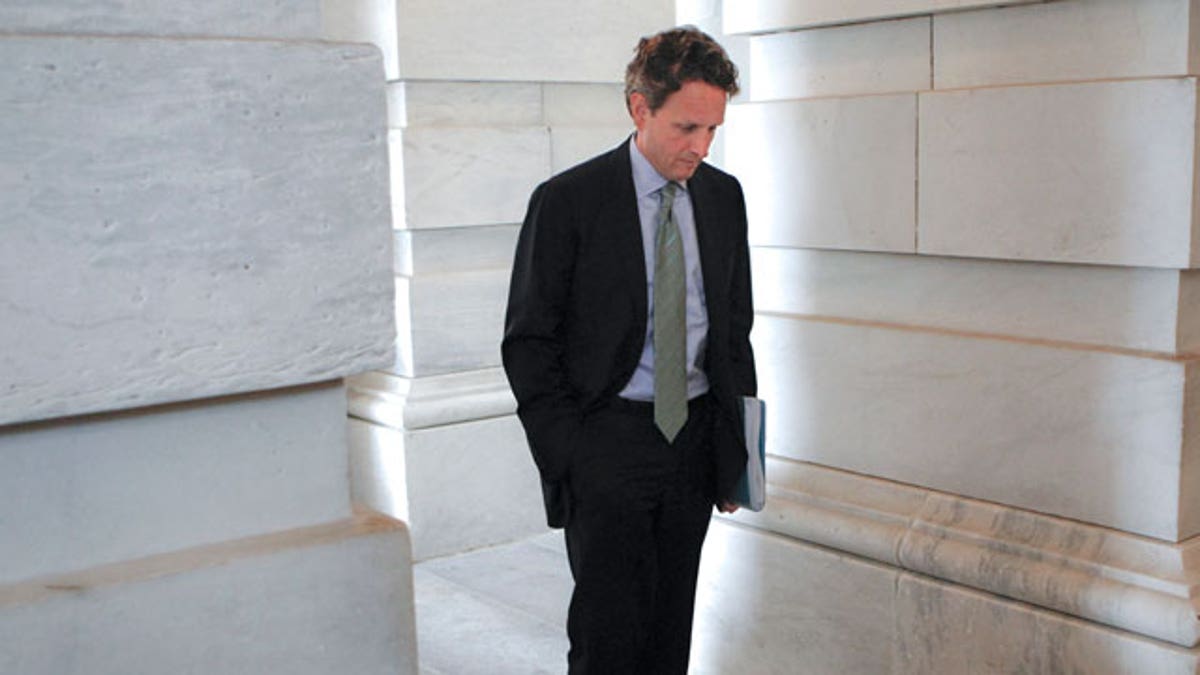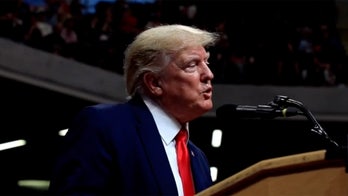
In this file photo taken June 16, 2011, Treasury Secretary Tim Geithner waits for the arrival of Vice President Joe Biden during the negotiations between Republicans and Democrats in Congress on how to solve America's debt crisis and budget problems, at the Capitol in Washington.
Lawmakers could be forgiven for being confused or skeptical about exactly when the U.S. will hit the debt ceiling. They were originally warned it would come much earlier than Aug 2.
“The first date that Congress was supposed to reach a debt ceiling was on March 31, between that date and May 16, so members of Congress legitimately have real concern if this August date is real date or yet another fake deadline,” said Brian Darling, a senior fellow at The Heritage Foundation, a conservative think tank.
Many lawmakers and analysts of all stripes believe the U.S. will bump up against the $14.3 trillion debt ceiling sometime in August. But they have different views about what that means for the country.
For instance, the U.S. would still have enough tax revenues to cover some 56 percent of its bills.
“With our actual cash flow requirements, that will permit payments on the national debt interest, Social Security, Medicare, and most defense spending,” said University of Maryland economist Peter Morici. “Beyond that, there would be very little cash left.”
Twenty-three Republican senators wrote a letter to President Obama a month ago urging him to develop contingency plans well ahead of hitting the debt ceiling.
“It would not be pleasant operating under a 'Debt Ceiling Budget,' and no one is recommending it. But it would not be Armageddon," the letter said.
But officials would have to sort through the pile of 80 million bills a month, and decide which ones to pay.
“Choosing winners and losers, it would be a very uncomfortable and chaotic process, because … there is no legal basis for saying ‘I'm going to pay you and not you,’ said Jay Powell, a former Treasury official in charge of the national debt in the George H.W. Bush administration. “You can’t cut 44 percent of spending without cutting things that are really important and really popular.”
Morici argues there is one way for the government to keep paying its bills for a year or longer
The Treasury can print money and the Federal Reserve can buy back that cash when it goes into circulation with its portfolio of bonds, and keep going quite a bit that way.”
Which, Morici says, would add $1.6 trillion in leeway.
But others say that absolutely should not be an option.
“If you want to permanently distort, destroy our credibility in the world credit markers, have the Fed start printing money to pay our bills,” Powell said.
Even if there's no deal before the nation hits the debt ceiling, most think it would only last a few days.
“I don’t think that anybody believes that the federal government will not raise the debt ceiling for long a period of time,” Darling said.
But everyone laments that this is what happens to countries that can't control their spending -- they face nothing but bad choices.
“There just aren't any good ones,” Powell said. “And guess what? They get worse every year the longer we don’t deal with this problem, the worse the choices get.”




